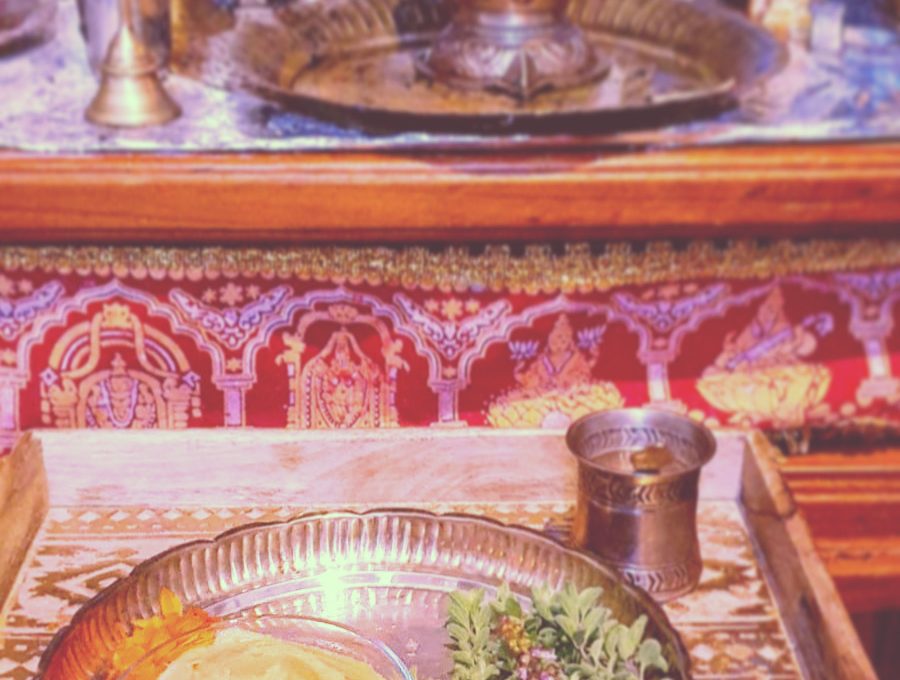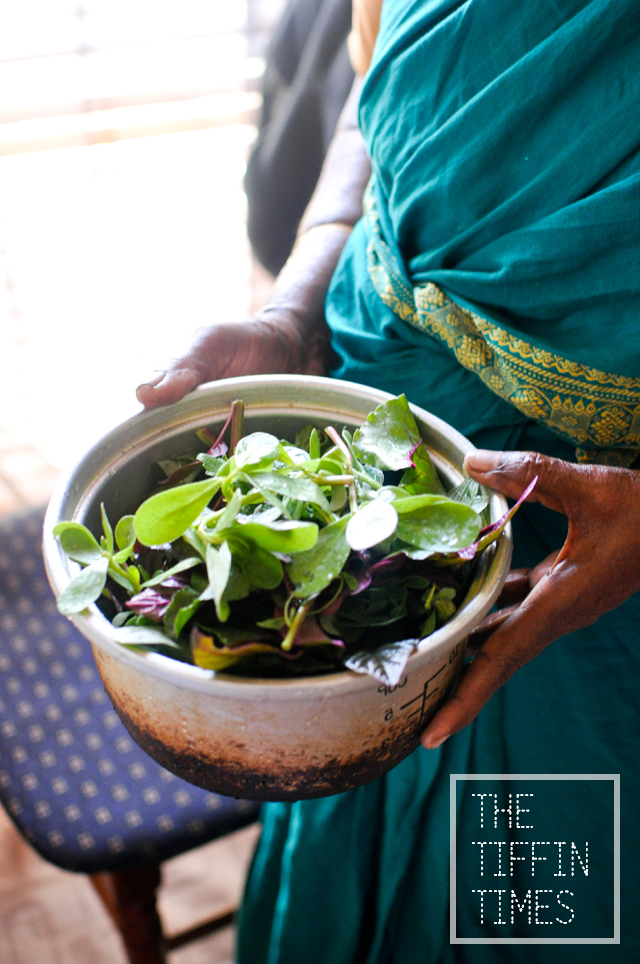Today is the first day of the Tamil month Aadi (ஆடி). There are several festivals that are celebrated during this month (considered an auspicious period for worshipping the divine).

The month of Aadi also marks the beginning of monsoon in Tamil Nadu and water levels of the Cauvery river also rise – the festival of Aadiperruku (on the 18th day of the Aadi month) celebrates our gratitude to nature and is a prayer for fertile fields, as for farmers this is the time to be sowing seeds. During this month, women also worship the Goddess Sakthi in her different forms, mainly in the Amman form and usually prepare dishes such as koozhu, kali (kummayam) or adai, and distribute it to everyone.
Aadi Sundays, Tuesdays, Fridays, as well as Amavaysa are considered important days during this month and there are different offerings and prayers made.
For our first day of Aadi, we prepared Aadi kali (Aadi Kummayam). Aadi Kali is a typical traditional Chettiar dish made with 5 simple ingredients. Interestingly, the dish is also given to girls who have just come of age – a protein and iron rich meal that helps nourish the body in the developing young adult stages.
Aadi Kali Recipe
Ingredients:
- 1 cup ural dhal (without skin)
- 1/2 cup moong dhal (without skin)
- 1/2 cup jaggery
- 3 cardamom pods
- 3 tbsp gingelly (sesame) oil
- 1 & 1/2 cups water + an additional 1/2 cup
Method:
- roast each dhal separately until aromatic (imparts a sweet & nutty smell) and allow to cool
- once cooled, mix both dhals along with the cardamom pods and grind to a fine powder (the finer the powder the smoother the kali will be)
- in a separate bowl, mix the cooled dhal powders with 1 & ½ cups water, ensuring there are no lumps
- in a medium sized saucepan, bring ½ cup water to boil then add the diluted dhal mixture
- keep stirring over gentle heat to above any big lumps or burnt bits – the mixture will start to thicken slightly
- add the grated jaggery and keep mixing (the sugar will melt into the mixture and it will loosen a little bit
- keep stirring until the kali starts to pull away from the sides of the pan
- add the gingelly oil and mix to incorporate well – the kali will seem to form a ball
- it is now ready to be served (can be eaten hot or cold)



